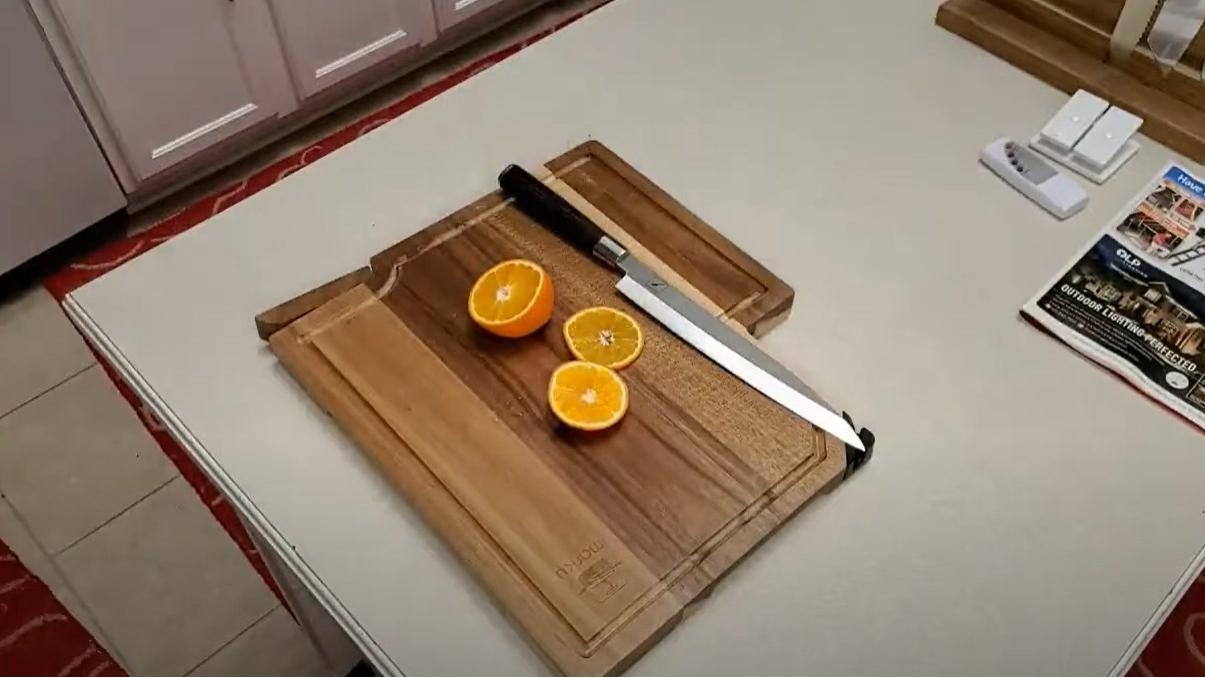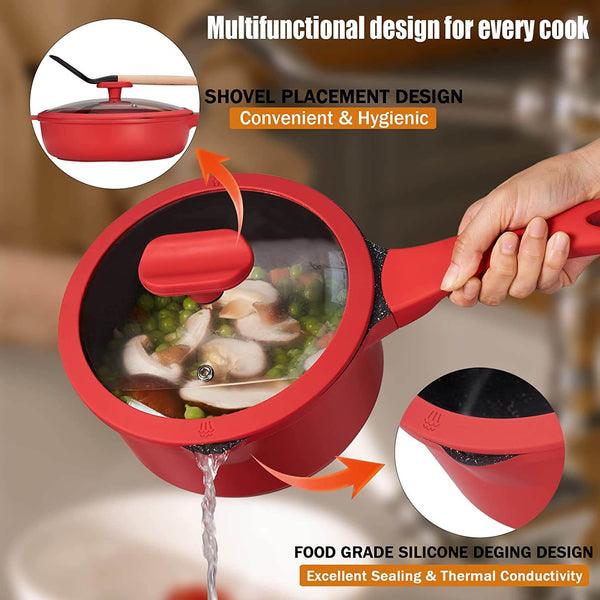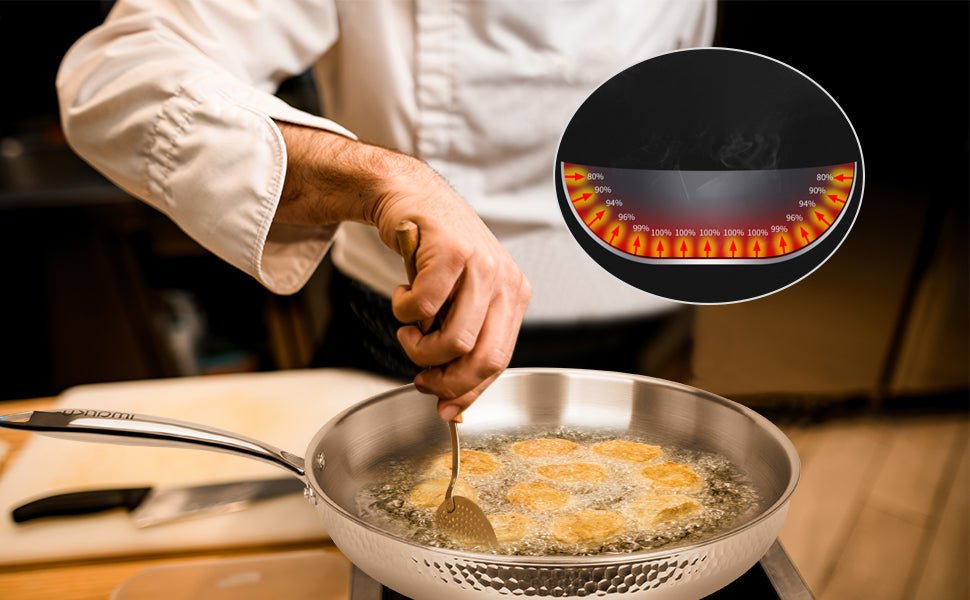TABLE OF CONTENTS
What is the one thing that makes Japanese cuisine so spectacular? Good question. Fresh ingredients and the proper tools (wait, that makes two!)
So, here's the deal – I have a craze for sushi and sashimi – there isn't a single Japanese restaurant in my neighborhood that I haven't tried.
Even the Covid couldn't stop me from having a mouthful of my favorite dish – yep, you can tell my love for these fishy delights! When most people were trying dalgona coffees and homemade bread, I was busy mastering the art of making sashimi.
The process of unleashing the potential chef in me led me to a serious acknowledgment – you can make Japanese food taste good, but it is the tools that make them look good! I don't exactly remember what happened afterward, but a rider did drop me a Yanagiba knife four days later.
Never heard of that before? Don't worry because I have dedicated this entire post to Yanagiba knives. Read on to learn about professional sashimi knives and the best Yanagiba knife you can find in the market. So, let's get started!

What is a Yanagiba Knife?
A Yanagiba knife is the most aesthetically pleasing Japanese knife that you will ever use. Having originated in Japan's Kansai region, the Yanagiba knife, or as the natives call it – the Yanagi has a long and narrow blade.
When I first looked at a Yanagiba knife, it looked very similar to a willow leaf. Later on, I was amused that the term 'Yanagiba' translates to 'willow leaf' in Japanese.
The Japanese people describe a Yanagiba knife as a 'Kataba' – a single bevel blade. Because the blade is sharpened from only one side, you can achieve clean cuts on your proteins and identify pin bones in fish. One distinct feature of the Yanagiba knife is that its exceptionally slim blade is concave, making the slicing much smoother.
What is a Yanagiba Knife Used for?
If you haven't guessed until now, a Yanagiba knife is chefs' primary choice for slicing raw fish. But their usage is not limited to slicing; the Japanese even use the Yanagiba knife to fillet a fish and remove its skin.
Moreover, the Yanagiba knife is termed as a "shobu bochu" or a "sashimi knife," because it is widely used to prepare sashimi. And not just sushi, but you can even slice fish to make raw sushi and nigiri sushi (a blend of sushi and sashimi).
There is barely a Japanese sushi restaurant where you won't find a Yanagiba knife. The Japanese chefs believe that Yanagiba's slim blade is crucial to keeping raw fish's natural flavors and texture during the preparation process. Furthermore, they consider the long blade the perfect tool to neatly slice through the raw fish in a firm motion from top to bottom.
The uses of Yanagiba knives have increased since they started gaining popularity in the Western world. People nowadays even use these Japanese blades to slice meat, steak, and even de-bone or spatchcock raw chicken.
The acute edge angle and slender blade of the Yanagiba are extremely helpful in significantly reducing the amount of time and force required to cut through tough meat. Other than that, you will find the Yanagiba knife extremely valuable if you love the sleek slices of vegetables such as daikon radishes.
How to Use a Yanagiba Knife?
The Yanagiba knife is the ultimate weapon that can slice through even the most delicate meats with precision and ease. Even though it provides absolute assistance in slicing and cutting delicate meat, it doesn't offer much help when you cut your finger with it! So, it would be best if you used it with caution.
One more thing - you don't want to use it as your regular serrated kitchen knife. The back of forth motion you have while using typical knives, well, that doesn't work here! Unless you want your fish to look like an 8-year old pretending to be a chef has butchered it, you should use a Yanagi smoothly, confidently, crisply, and in long strokes.

How to Cut Fish Using a Yanagiba Knife?
I prefer to extend my index finger to grip the unsharpened edge of the knife (you want to make sure it's unsharpened – I speak from experience!). This position gives me better control over the knife.
Next, you want to place your finger against the fish and slice it towards your hands. Remember that you don't have to slice in towards your hands, rather keep your knife at an angle (again – experience speaks!).
Finally, to slice your fish, start from the blade's heel and make a long, firm stroke through the fish to the tip of the knife. The extra sharp, sleek knife glides right through the fish like butter, so you don't have to 'saw' the white meat.
Also, if you plan to experiment with different slicing techniques with the knife, make sure you are doing it on something other than fish, or you'll end up ruining the meat.

Top Yanagiba Knife Recommendation
During my hunt for the perfect Yanagiba knife, I scanned the web for hundreds of reviews on the best Yanagiba knives. To save you the inconvenience of doing the same, here is my recommendation on the best Yanagiba knife that you should invest in:
Yanagiba Slicer 10"
The Yanagiba Slicer 10" is the perfect addition to any kitchen set. It comes with a Pakkawood handle, a classic ergonomic design that ensures ease, and a comfortable grip without compromising on the look.
Moreover, the Yanagiba Slicer 10" is made of high carbon stainless steel blade that glides through fish like butter. This durable and sharp design is high in demand by top-rated Japanese chefs.
Furthermore, the Yanagiba Slicer 10" is handcrafted by industry experts to ensure that it slices through the tiniest of tomatoes without sacrificing even the littlest amount of juice.
This beautifully sleek Japanese design is just what you need for your kitchen – wash it by hand and dry immediately to ensure that your investment lasts years without rusting!

Pros
Traditional ergonomic construction
High-quality stainless steel blade
Water-resistant handle
Great maneuverability
Fast and easy to clean
Affordable price
Cons
The Yanagiba Slicer 10" isn't dishwasher friendly.
Frequently Asked Question
Now that we have discussed all the details about Yanagiba knives, you must have some queries regarding these Japanese blades. To save you the struggle of typing them down in the comments section and waiting for a reply, here are the answers to some of our most frequently asked questions:
Q: Can you skin fish using a Yanagiba knife?
A: Yes, you can! The Yanagiba is a slim, pointed knife whose curved blades make it extremely easy to remove fish's skin without damaging its delicate flesh.
Q: Can you fillet fish using a Yanagiba knife?
A: Yes, the Yanagiba knives are perfect for filleting fish. These professional knives are exclusively designed to slice and fillet fish without exerting too much force.
Q: What material are the Yanagiba knives made up of?
A: Most Yanagiba knives are constructed of carbon steel – a thin, non-stick knife. This material is extremely durable and rust-proof and maintains a fine edge with exceptional precision.

Q: Do Yanagiba knives cut straight?
A: The blades of Yanagiba knives are polished and crafted at an angle, so they don't cut straight! To achieve clean cuts, you have to place the knife slightly at an angle.
Q: How can we sharpen Yanagiba knives?
A: You can sharpen Yanagiba knives on a whetstone. The process is quite straightforward:
Place your Yanagiba flat on the whetstone bevel side down at a 45 angle.
Hold the handle using your right hand and apply pressure on the knife's heel using your right thumb.
Next, use the index, middle, and ring finger of your left hand to apply pressure on the part of your knife closest to the heel.
Push the knife forward on the whetstone while applying pressure. Release the pressure and pull it back.
After a few passes on the stone, slowly move your fingers up towards the tip of the knife and repeat the same procedure to sharpen the entire length of the blade.
Repeat the process until the knife is sharpened (remember to apply pressure only when pushing the knife on the whetstone, not when pulling it back).
Next, turn your knife to the other side and lay it perpendicular to the stone. But this time, instead of applying pressure while pushing the knife, you have to force it down while pulling it back.
Keep reapplying water on your whetstone as often as necessary.
Q: Which size of Yanagiba knife should I buy?
A: Yanagiba knives come in different lengths, generally ranging from 8" to 14". Most companies manufacture standard sizes between 9.5" to 10.5". Which one you buy depends upon your preference and experience, but I recommend the Yanagiba Slicer 10" because it gives better control and a good length to make fine cuts with a single motion.
To End the Note
In dishes like sushi and sashimi, where the presentation matters as much as the flavor, you must use not only the finest ingredients but the finest tools as well. Yes, any knife can suffice for the task of slicing raw fish, but the precision you get with a Yanagiba knife makes a noticeable difference.






















Leave a comment
All comments are moderated before being published.
This site is protected by hCaptcha and the hCaptcha Privacy Policy and Terms of Service apply.